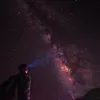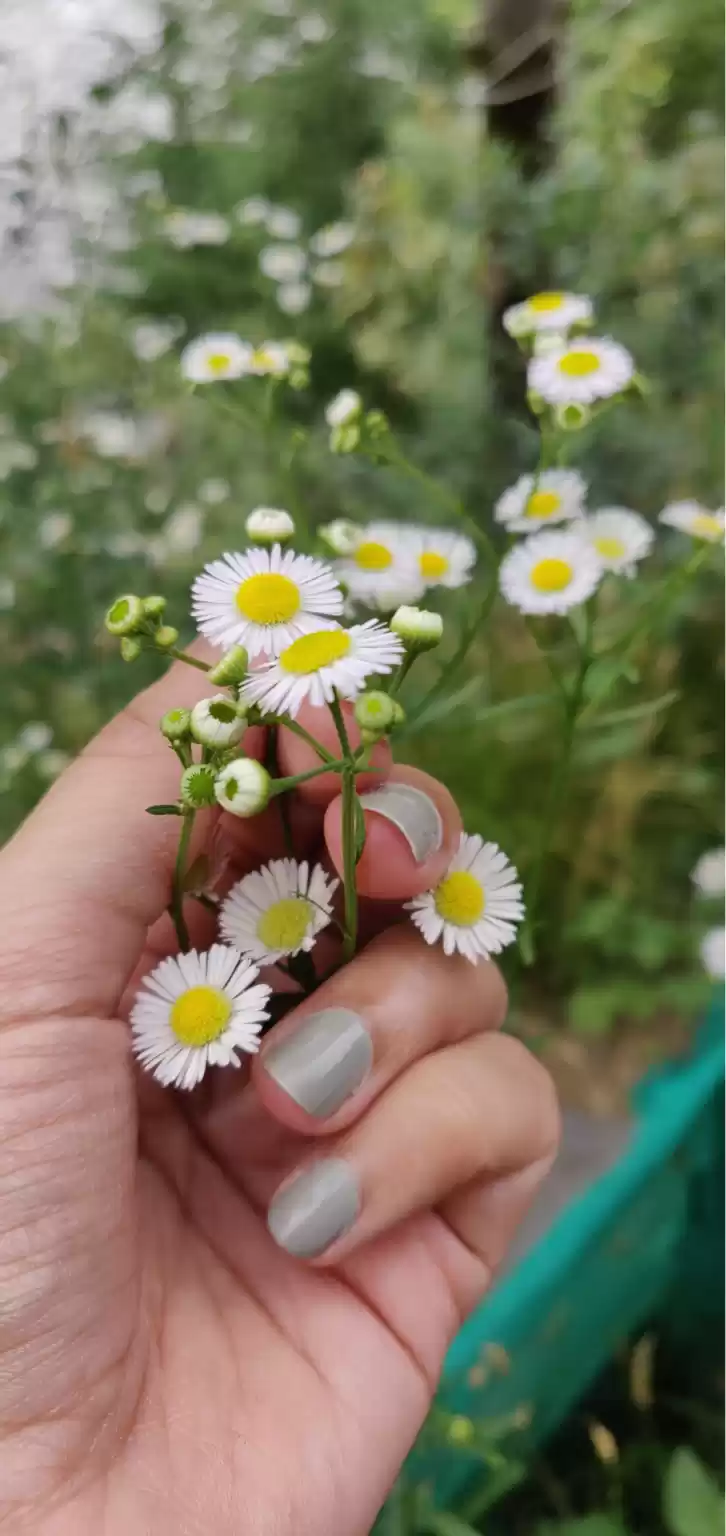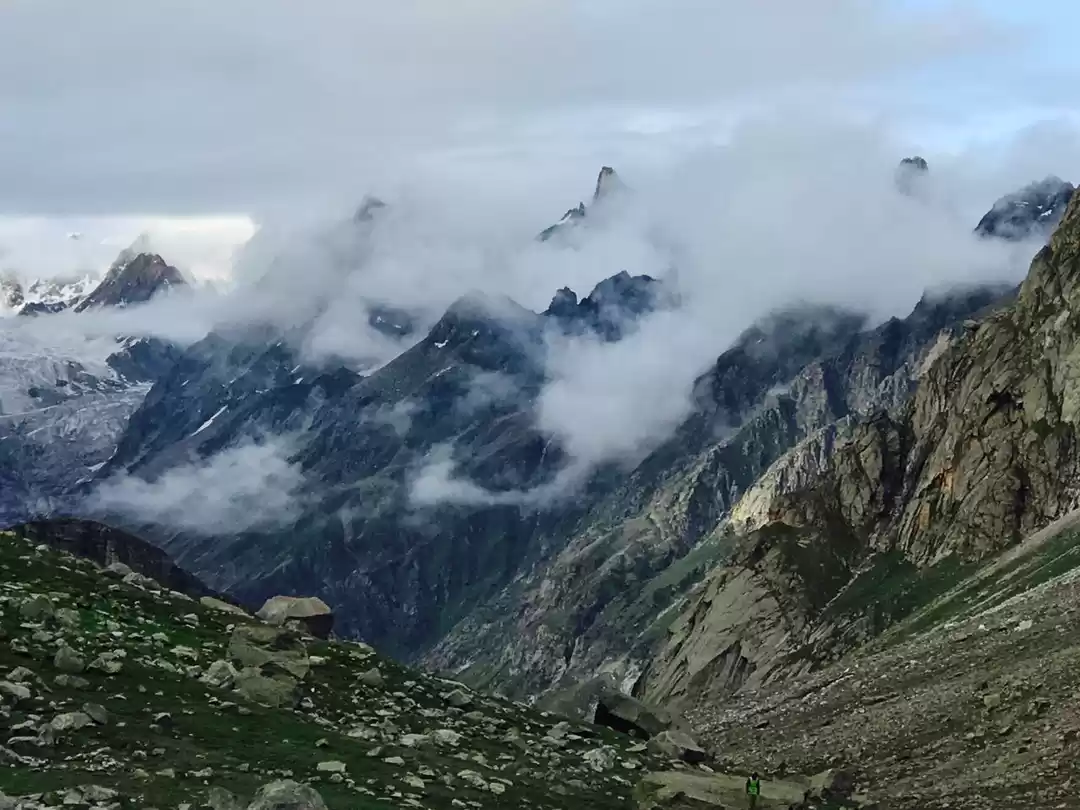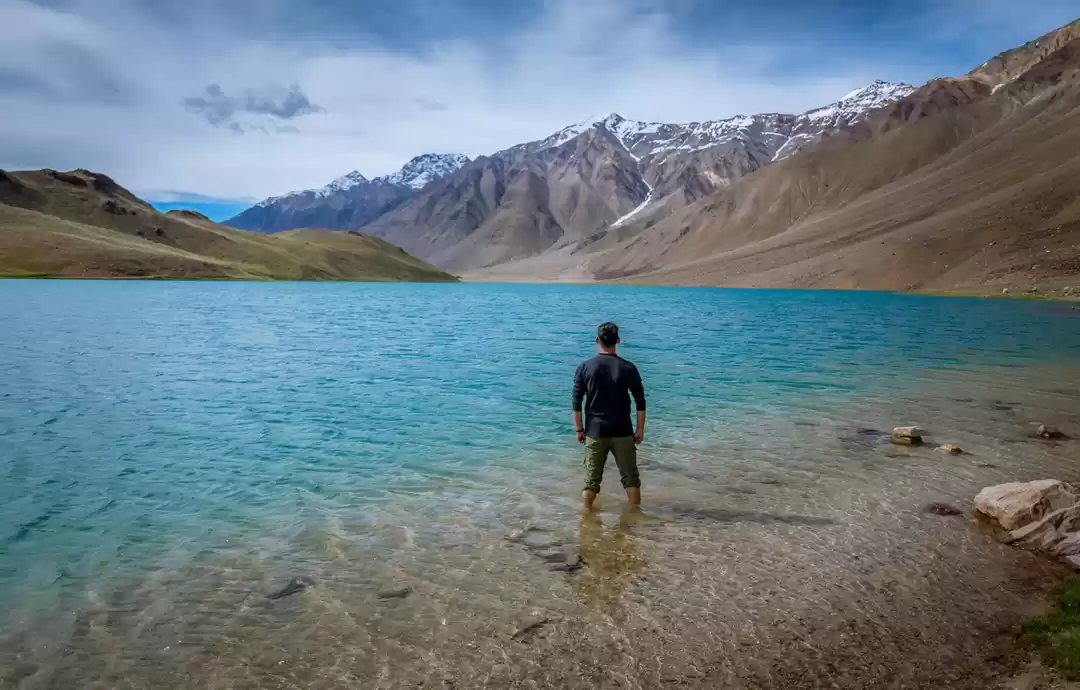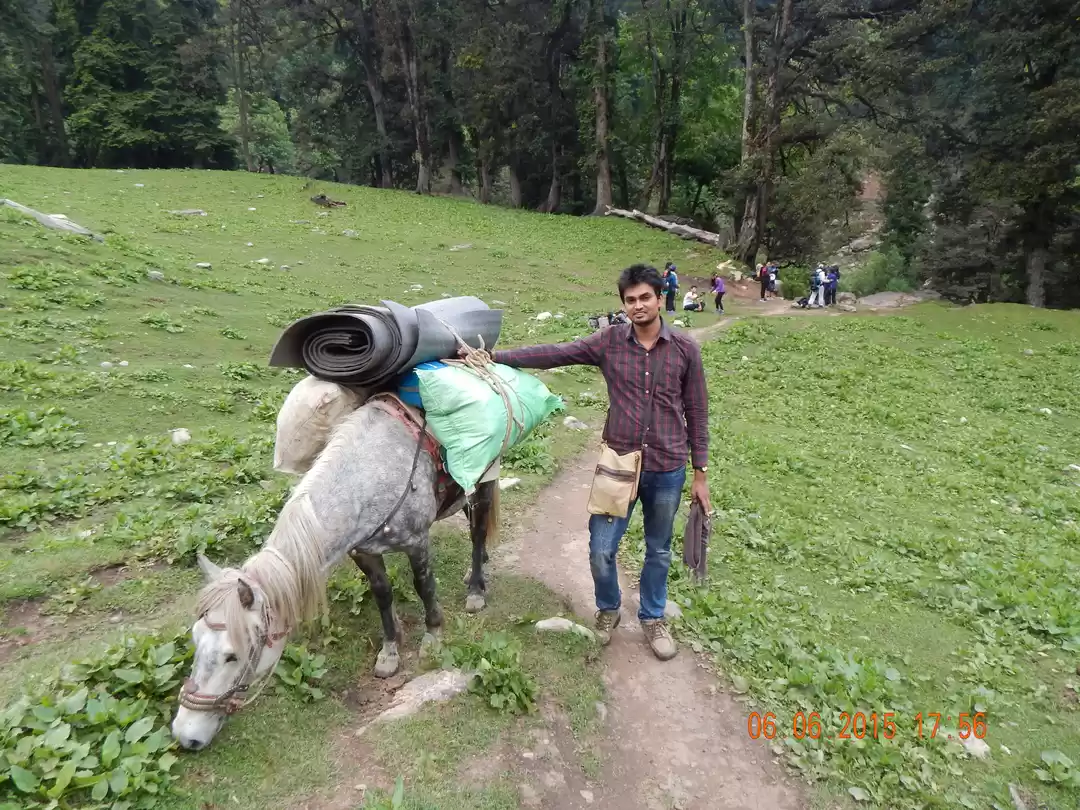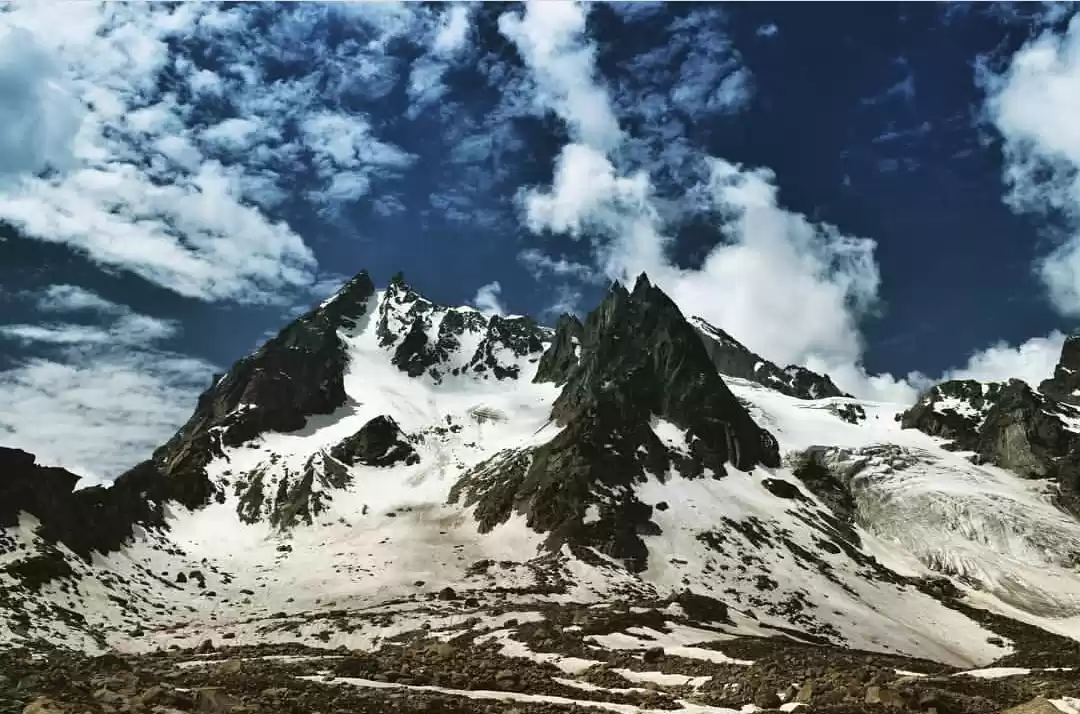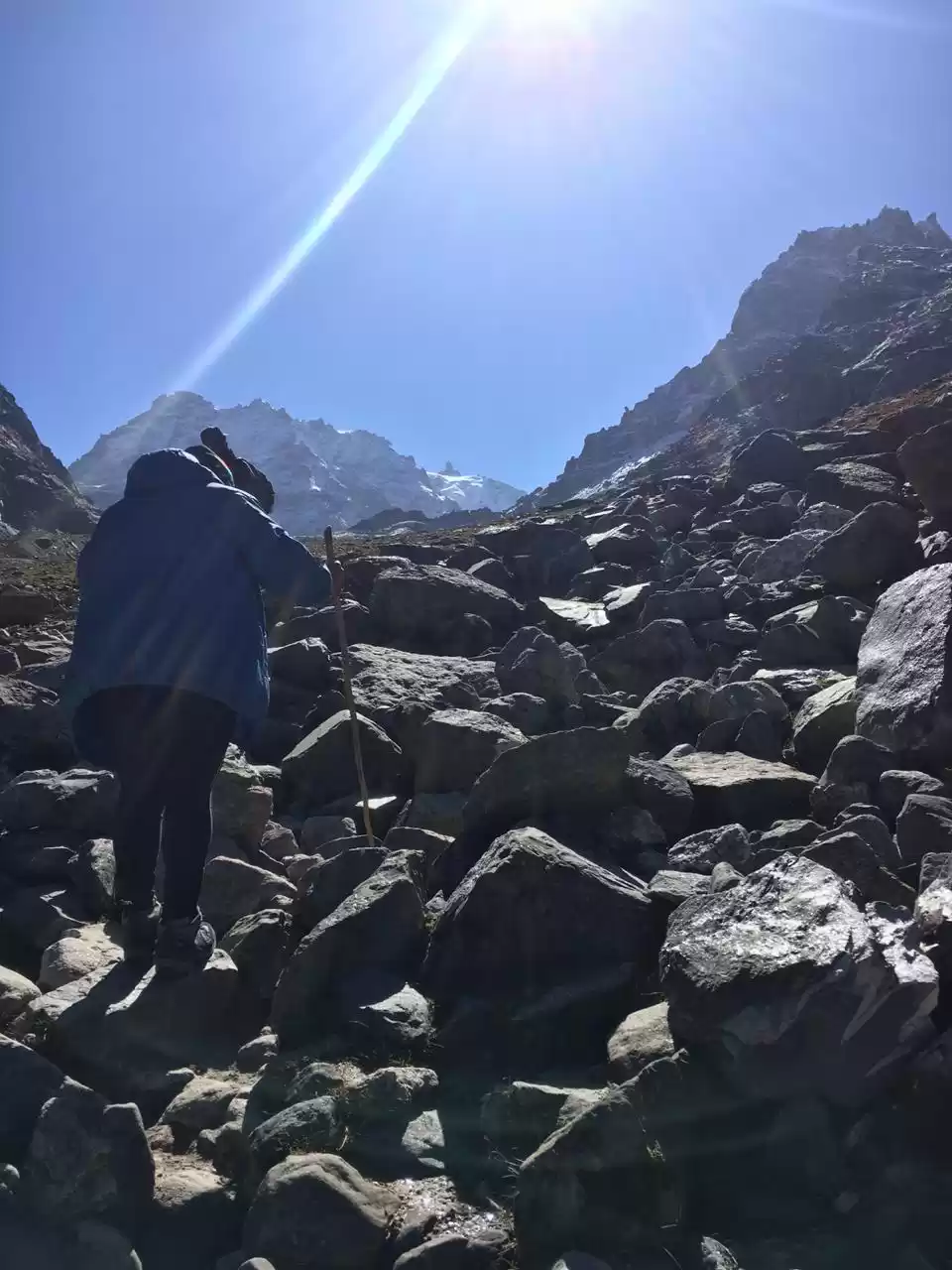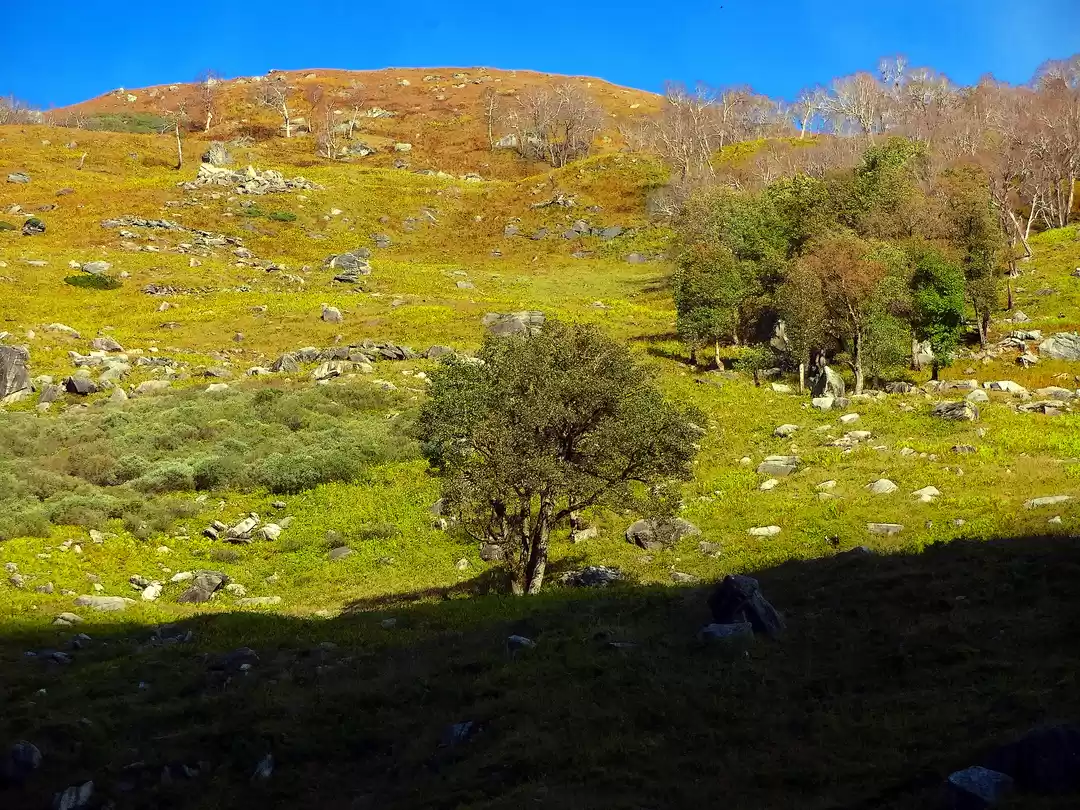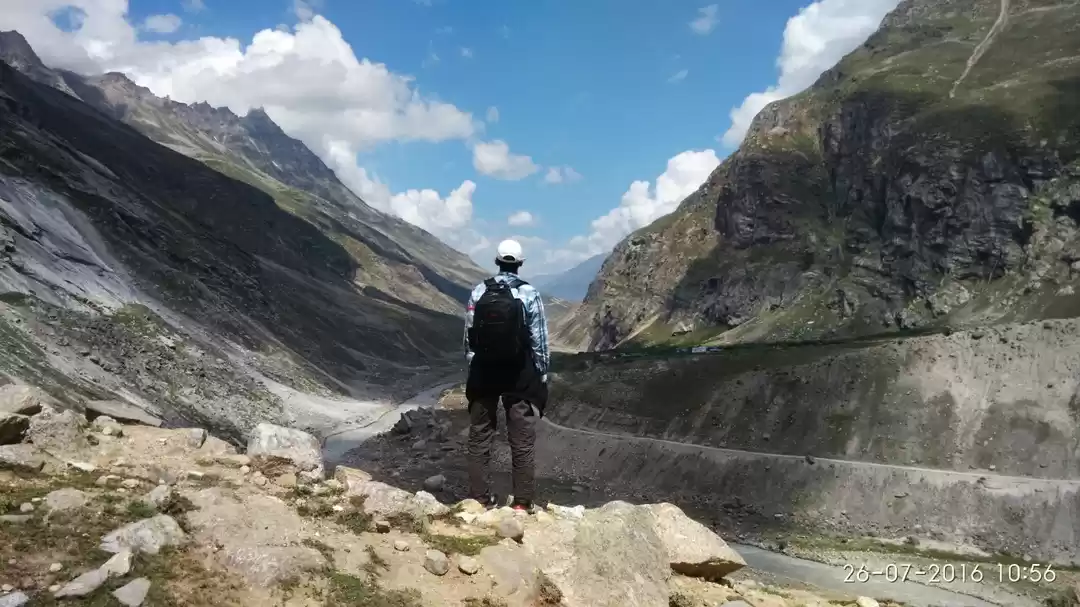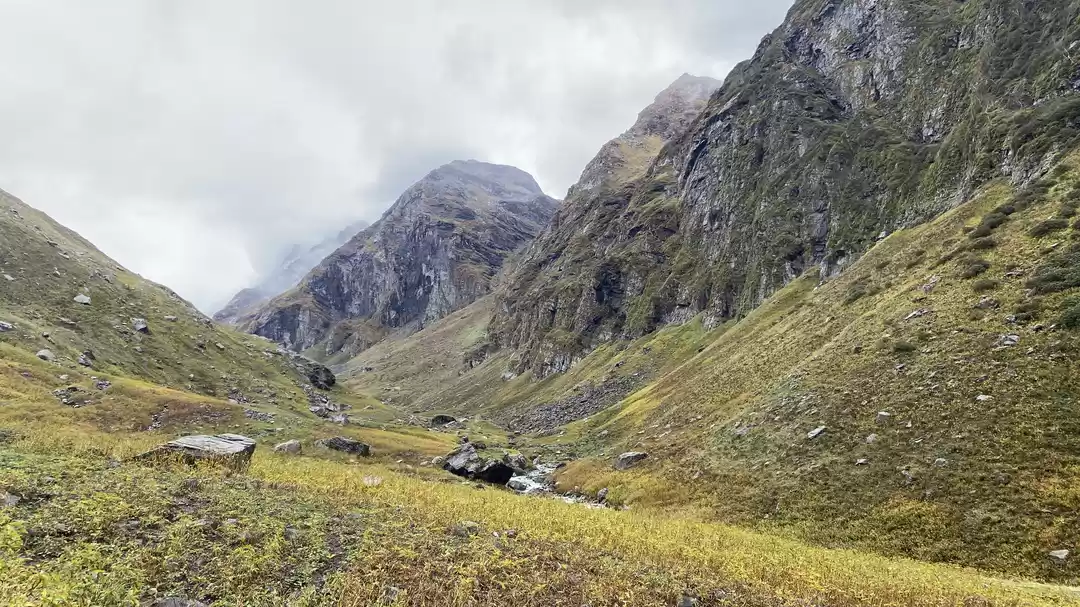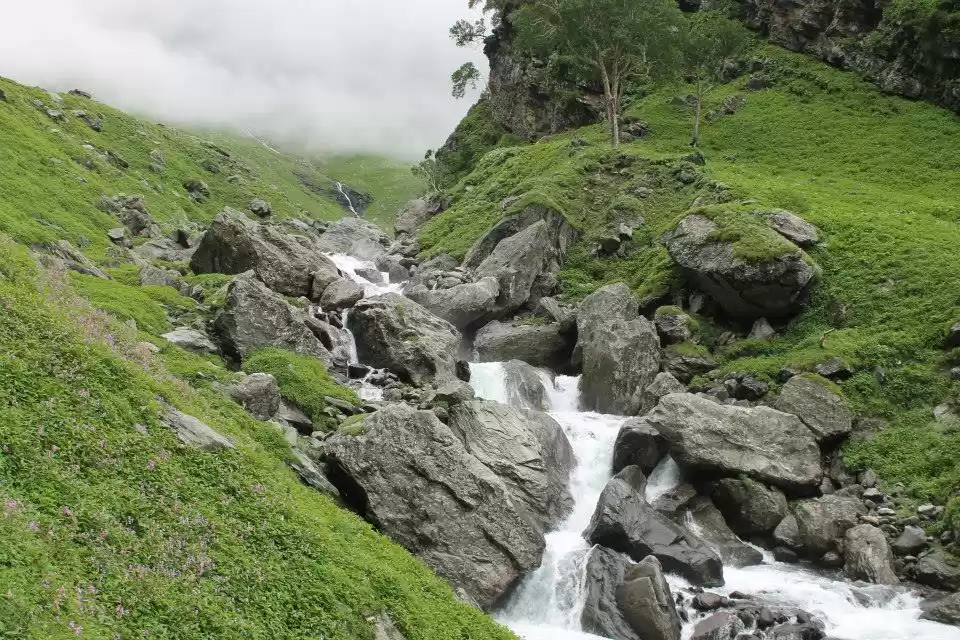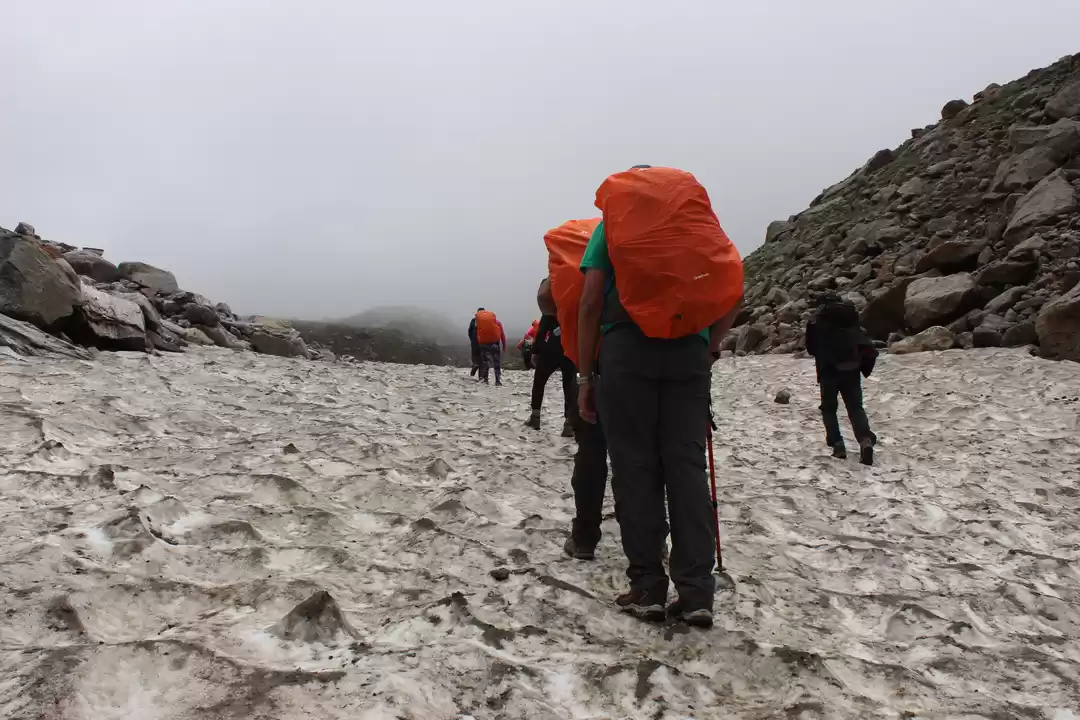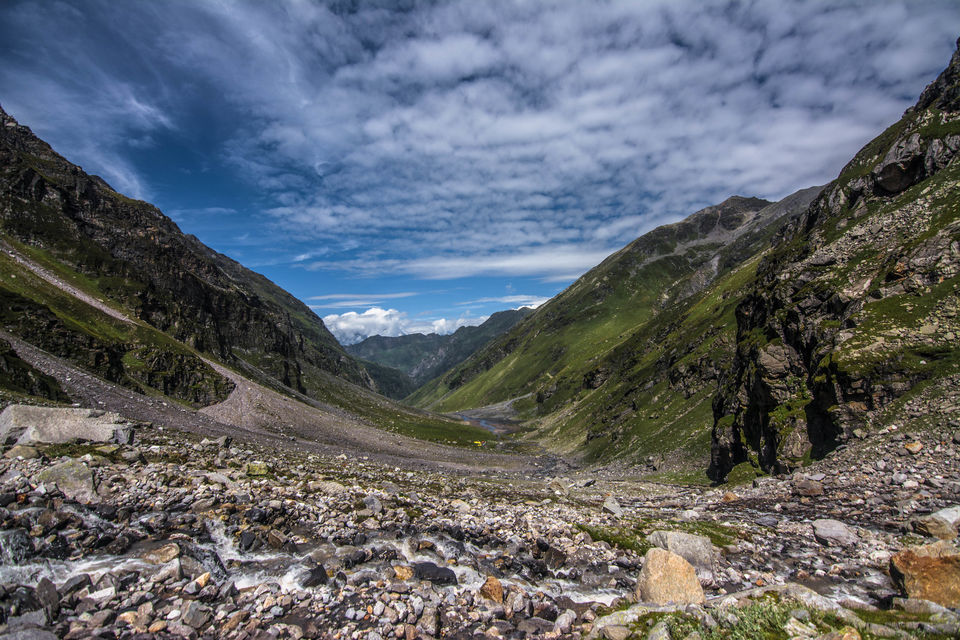
Thinking about a trek takes a lot of preparations. Firstly you need to have the basics right which includes the following parameters : When ? Where ? and How ?
Being a trek enthusiast and deciding Hampta Pass trek as my first himalayan trek, made me research a lot about the various aspects of this particular trek.So selecting August end as the perfect time for our venture, we started booking our flight tickets to Delhi. An overnight bus journey took us to Manali, from where the trek starts.
Day 1 :
A very sunny day at Manali gave us high spirits, after all it was my first Himalayan trek. So after buying a few essentials for the trek, we started this brilliant journey.From Manali bus stand, we took a jeep, which took us to Jobra Naala (Approx time taken : 40 mins). The road was pretty steep and as we rose up the winding roads, we were mesmerized to see how Manali looks like from above. Trust me it looked like the perfect Hamlet.
Upon reaching Jobra Naala, we were introduced to our trek guide. He briefed us about the trek and its essentials and finally invited us for a cup of tea at the last commercial tea stall just at the start of the trek. So after quenching our thirst, we started following our trekking guide.We were welcomed by the lush green alpines of Kullu valley.

The trek started off with narrow muddy trails which led us to a bridge which took us to the other side of Hampta Naala (colloquially named).

The trek is pretty much on a plain terrain which is filled with small boulders and was quite moderate. It took nearly 2 hours for us to reach the campsite. After a blissful sunset , we were awestruck by the “moon rise”.


As the moon slowly rose over the mountains, we were flooded by white light with millions of stars as the canopy.


Day 2:
Perfect weather is what you can expect if you do this trek post monsoon. Hence for us, it was no exception. After an early morning breakfast, we started day 2 of the trek.




The chill in the wind made us realize that today we are ascending further. So after a strenuous ascent we reached a point where we had to tie our shoes around the neck and cross a stream.

The water was icy cold and the force of the stream was very rough. So after this small bit of adventure we found ourselves accompanied by the Hampta naala again to our right.

As we ascended further, we could see small waterfalls and the Hanuman Tibba peak rose up suddenly from the back side.


So after nearly 4 and a half hours of trek, we reached a point called Jwara, where we had our lunch. After this point you would have a realization that you have actually gained good altitude as the trees are disappearing.



Grasslands followed next, with clusters of white and red wild flowers. Occasionally you would have to give way to herds of sheep and lambs on the way.



At around 3:30 pm, nearly 7 hours after we started the trek we got the glimpse of Balu Ka Ghera campsite.

What a relief ! As we settled up in our tents, our trek guide called us outside to make us witness probably the best sunset I have ever witnessed. Oh, it was very soulful as we witnessed the purple hour of the Himalayas.

And quickly enough, thick clouds suddenly gulped us from nowhere. We were nearly at 13,000 ft and hence the chill in the wind was ready to send shivers down our spine. The trek today was quite challenging, as this was our first long stretch of walking with steep ascents and moderate descents. After finishing off our dinner, we slept quite peacefully at 1 degree Celsius, and prayed to god to clear up the clouds.
Day 3:
Yes, god responded in the perfect manner. We woke up to see the Indrasan peak at its full glory just in front of us.

So our trek guide briefed us that, this would be the toughest day of our trek as we are about to cross the vegetation zone, the boulder zone, the rock zone and then at 14,100 ft we would reach Hampta pass. We started very early in the morning, and started the ascent. The initial part was actually easy, till we reached a point where the Hampta naala actually forms among small sand dunes (Balu means sand in hindi, and hence the name of the place, Balu Ka Ghera).

From here we could see the near about 50 degree steep climb.


All forms of trees, grass and vegetation have vanished, and the landscape is now mainly huge chunks of boulder. So after a few hours of boulder hopping, we realized the scarcity of oxygen in the air as 10 steps would seem like a mile.



If you turn behind, you would actually see how far you have climbed up as the Balu Ka Ghera campsite seems like a miniature model.

Slowly and steadily we moved ahead and took the final leap to reach the Hampta pass.






Pure bliss it was. You could literally see the greens of Kullu valley on your right and the deserts of Spiti valley on your left. After spending nearly 40 mins at the Hampta top, we started our descent. Be ready to flex your thigh and calf muscles, as the descent might seem easy but you have to carry you entire weight on your knees. Adding to the difficulty, today’s descent was more challenging than the ascent as its nearly 85 degree steep and you could see tiny dot like camp site at Shea Goru, vertically below.




With great caution, we somehow managed to get down on the plains without a scratch. What a relief. Finally the campsite !

Today’s trek was the most challenging , and I have enough reasons to support my statement. Firstly the long strenuous 8 hours trek, then the altitude and finally the shivers that you get in such harsh cold deserts. The location of this particular campsite is very unique though. You are surrounded by snow-capped peaks but you are camping on a desert. Get ready for a brilliant star gazing experience and extreme cold.
Day 4:
The last day. We started early in the morning, as the sunshine started hitting the upper heights of the surrounding mountains.



After crossing a small rock bridge over a stream, the landscape that we witnessed today was quite unique. You would get a feeling that you are in an alien planet altogether. Huge chunks of rocks scattered here and there, through which the winding trail goes along.




After an hour of simple plain terrain, the final descent started. The road was quite dusty, so we had to measure our steps and take utmost precaution. After about two and a half hours we finally saw the tiny ribbon like strip of the Manali-Spiti highway.


A perfect viewpoint made us witness the valley below, and after nearly 3 and a half days of isolation, we finally saw some touches of civilization. Eventually, after 3 hours we reached along the shores of the Spiti river.



From there its just a piece of cake walk, as you have to simply cross boulders on plain terrain. Today’s trek was relatively easy as there is no ascent and the entire duration of today’s trek is just 4 hours. After crossing a small wooden bridge over one of the tributaries of the Spiti river, we took a walk for about half an hour along the river to reach Chhatru. Chhatru is the final point of the trek.From this point you would get taxis for both Spiti and Manali.
Trekking for 3 nights and 4 days, 26 kilometers and climbing at an altitude of 14,100 ft is not for everyone. Mark my words, you would need proper mental preparations for this trek.
Things to note:
Take lots of woolens and a good pair of trekking shoes
Trekking pole and rain sheet
Medicines, dry fruits and if possible chewing gums and chocolates
You need to listen to your trekking guide under all circumstances
Last but not the least, you would require enough will power and love for the mountains.
This trek is operated by every trekking organization and is a moderate one. You can google up for customized itineraries.
PS : To see snow May is the best time. June July are the months when it rains, so try avoiding this time. Post July till September you can get clear skies and rich flora and fauna.

